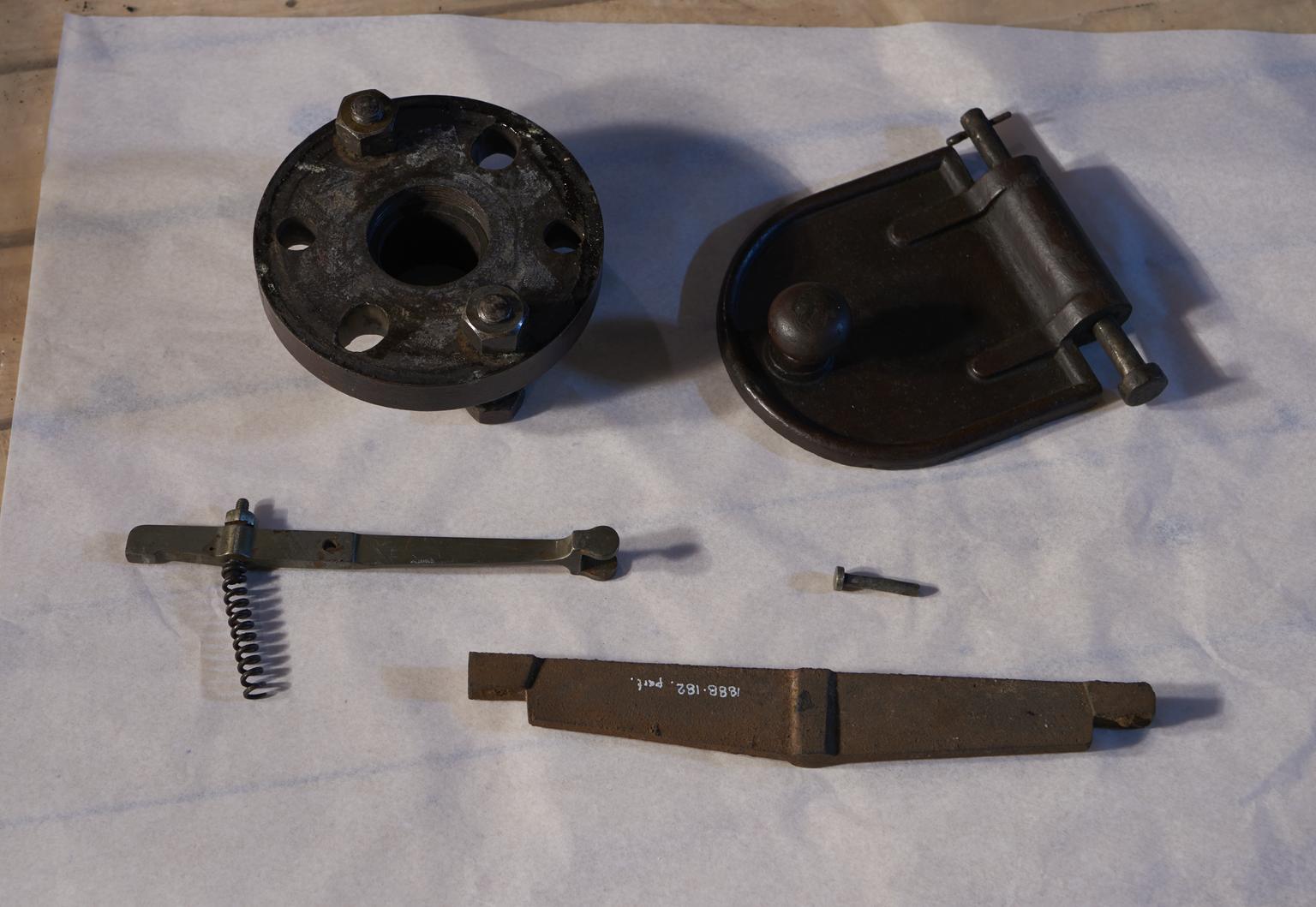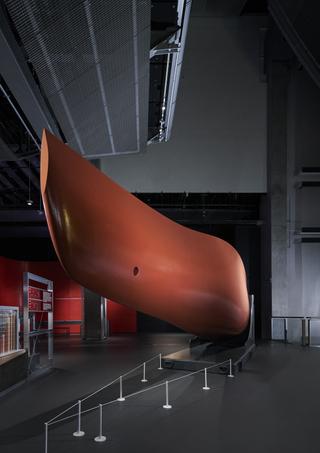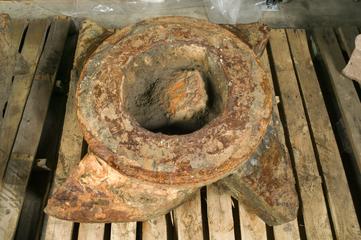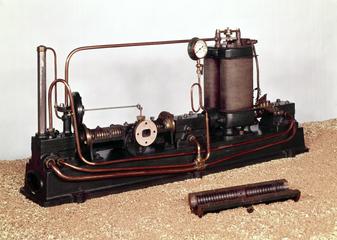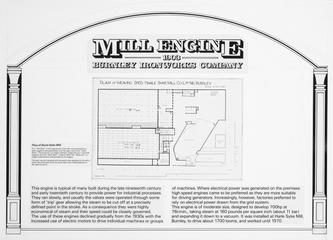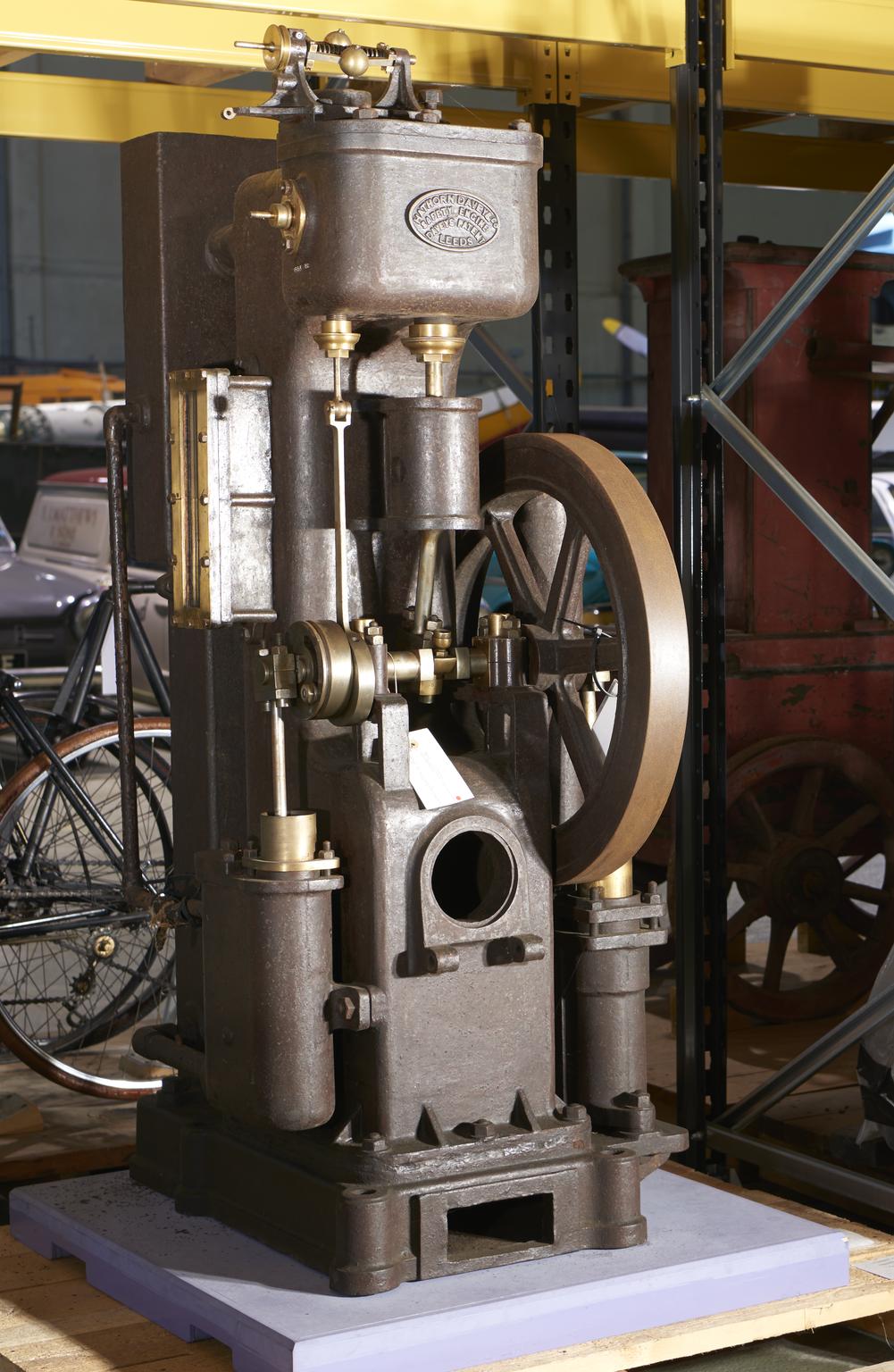
Davey's Safety Steam Motor, 1884
Safety steam motor by Hathorn, Davey and Co. Ltd, 1884
More
This engine was an attempt at producing an engine capable of providing safe, useful power in a domestic setting. It ran on the vacuum created by condensing steam, on the atmospheric principle, so that no high steam pressures were utilised. This meant the motor could be looked after by untrained domestic labour, with no fear of explosion.
- Measurements:
-
overall: 1710 mm x 810 mm x 1070 mm, 745.5 kg
- Materials:
- cast iron (possibly) , brass (copper, zinc alloy) , steel (metal) and glass
- Object Number:
- 1888-182/1
- type:
- motors
- Image ©
- The Board of Trustees of the Science Museum

